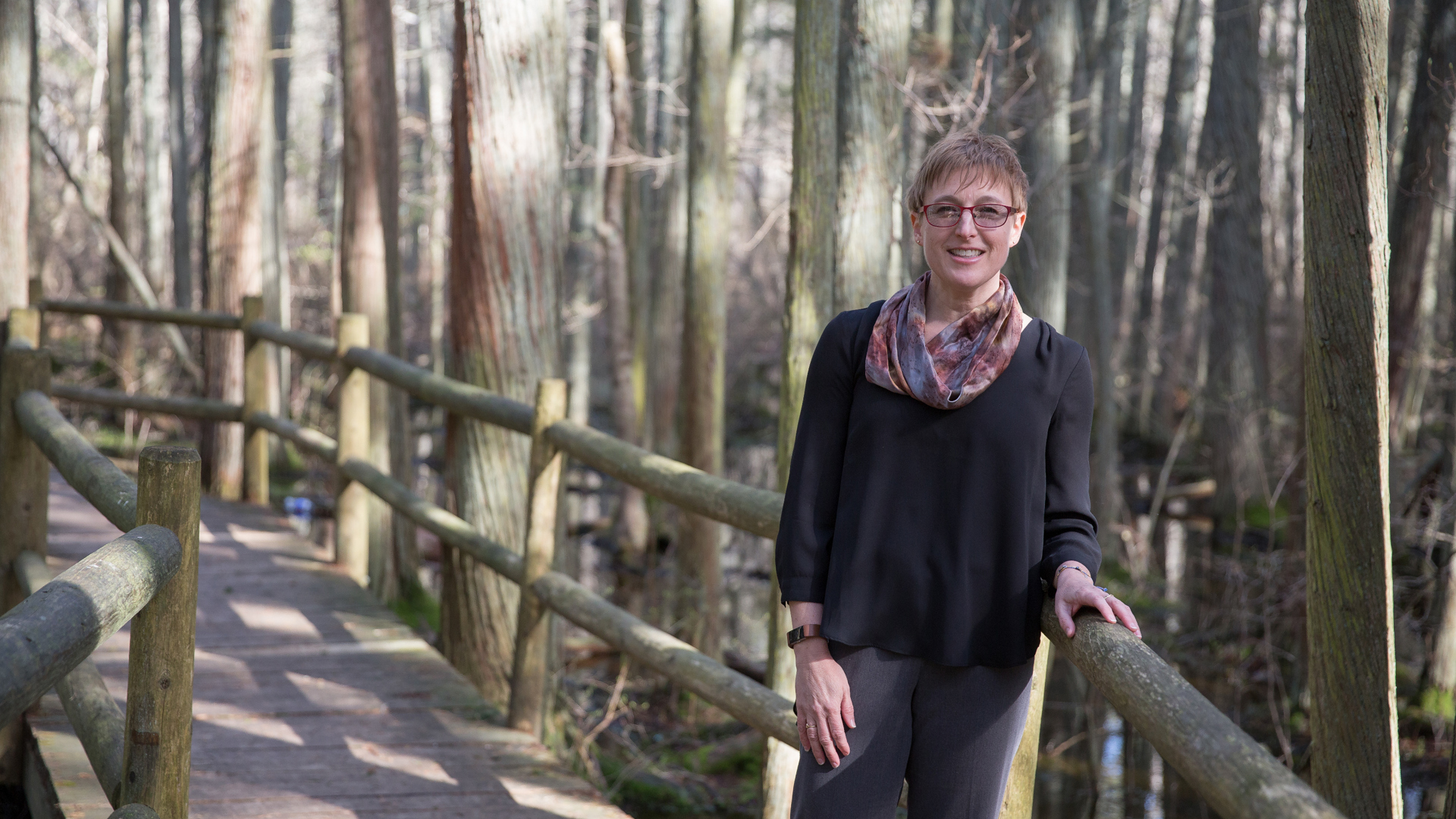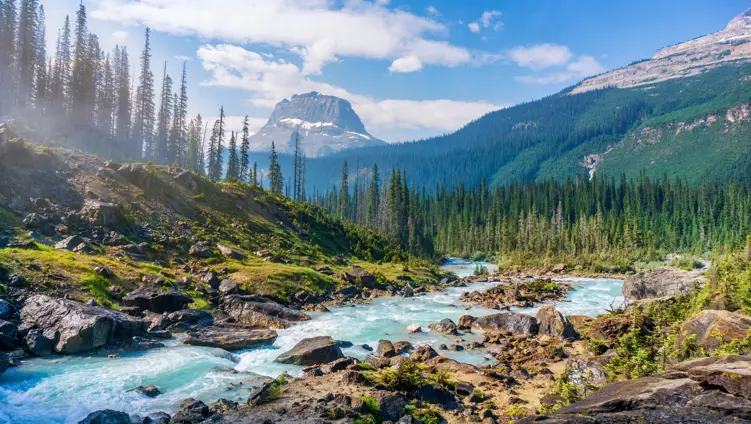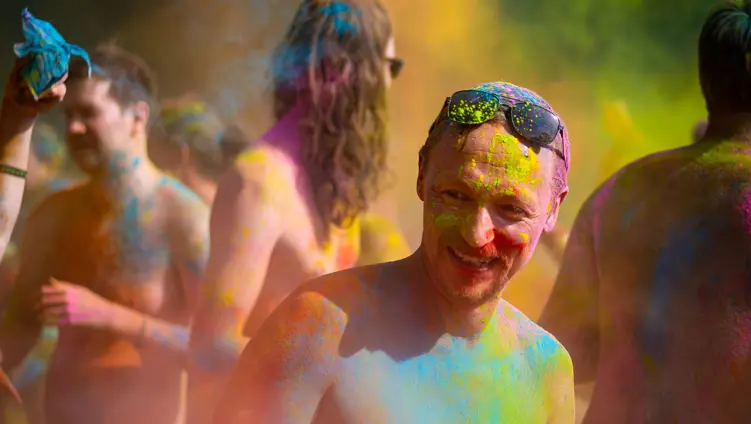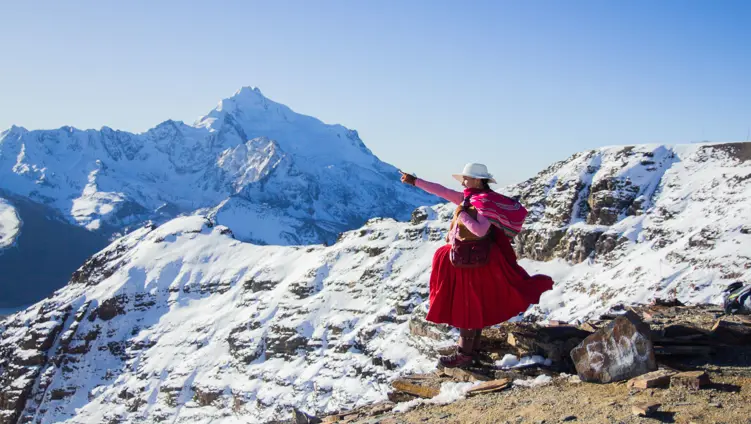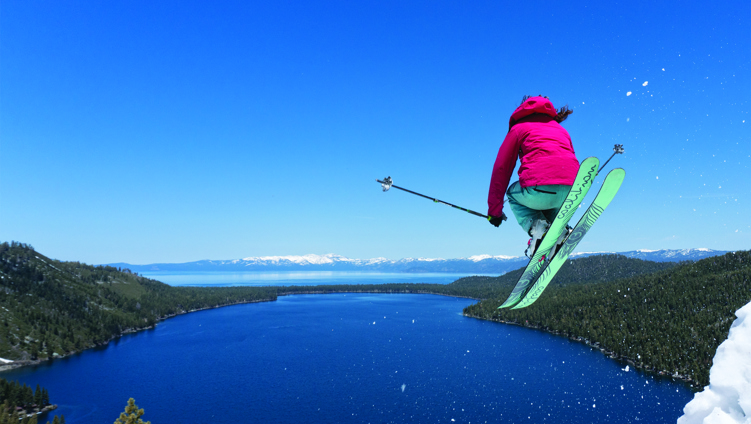
Kristin J. Jacobson is a Professor of American Literature, American Studies and Women’s, Gender and Sexuality Studies at Stockton University in New Jersey. Her latest book, The American Adrenaline Narrative (2020), identifies a new genre of travel and environmental literature and examines the genre’s significant tropes from an ecofeminist perspective. Our Editor Sam spoke to Kristin over email about the American Adrenaline Narrative and its implications. On Twitter she uses the hashtag #AdrenalineNarrative, and is keen to hear your adrenaline narrative news and recommendations. Given the pandemic, she is also happy to schedule a virtual talk with your club, organisation, bookstore, business, or school for free!
Kristin, what is the American Adrenaline Narrative, in a nutshell?
American adrenaline narratives tell the story of the trials and triumphs of those who explore and test the boundaries of wild environments and of the adventurer’s physical and psychological endurance. They focus on American adventurers, are set in a “natural” environment (typically not urban), and involve some element of risky exploration. They often have a journey structure, which takes the adventurer away from home, into nature, and then back home again. America is defined, in part, by the wild adventurous spirit and setting these stories exploit. To use Alvah Simon’s description in North to the Night, these “authentic adventure” experiences involving “solitude, deprivation, and danger” tap into the arguably uniquely American Thoreauvian tradition.
Adrenaline narratives include adventures involving water (rafting, kayaking, deep-sea diving, surfing), ice (polar explorations) and land/air (mountaineering, rock climbing, base jumping, wingsuit flying, skydiving, backcountry skiing). They also include expeditions involving long-distance endurance (running, biking, hiking, swimming) as well as outdoor survival or “alone in the wilderness” stories, such as Elizabeth Gilbert’s The Last American Man and Mark Sundeen’s The Man Who Quit Money. Just as climbs are rated for difficulty level, adrenaline narratives similarly offer high to low octane adventures that incur various degrees of risk and heart-pumping action.
The narrative is pervasive in contemporary American culture: we can find it in every media platform, from mainstream advertising to niche blogs to social media, books, television, magazines, and feature-length as well as short films. Mass culture advertising, for example, often markets the narrative through the term “extreme.” Google “extreme” and you will see that you can buy an “extreme” version of almost any product, including laundry detergent, toothpaste, gum, beverages, socks, and wood stain. Consumers are encouraged to buy into this narrative in order to be part of this lifestyle brand as well as to cope with their contemporary “extreme” lives - whether that involves buying a large SUV for a daily commute or having a stash of energy bars on hand for a quick lunch on the go.
Are there any especially representative examples?
Jon Krakauer is probably the most well-known author of American adrenaline narratives, especially his books Into Thin Air and Into the Wild. Other well-known texts and subjects include Cheryl Strayed’s Wild (both the bestselling book and the feature film) and the documentary films about free climber Alex Honnold, Alone on the Wall and Free Solo. Television shows that deploy the narrative include Dual Survival and Man, Woman, Wild. The controversial eco-warrior Timothy Treadwell is another infamous and representative example. Werner Herzog's film Grizzly Man introduced many to Treadwell’s story.
Lesser-known examples, but books and authors Adventure Uncovered readers may know, include Eddy L. Harris’s Mississippi Solo, Andrew X. Pham’s Catfish and Mandala: A Two-Wheeled Voyage through the Landscape and Memory of Vietnam, Jennifer Hahn’s Spirited Waters: Soloing South Through the Inside Passage, and Jim Malusa’s Into Thick Air: Biking to the Bellybutton of Six Continents.
I want to add at least twenty other examples that are not only representative of the genre but are also ones I thoroughly enjoyed. My list here is just a start. If readers want to check out a more complete inventory, I include a list of American adrenaline narratives at the end of my book. And, my full research bibliography of primary and secondary sources is available via Zotero.
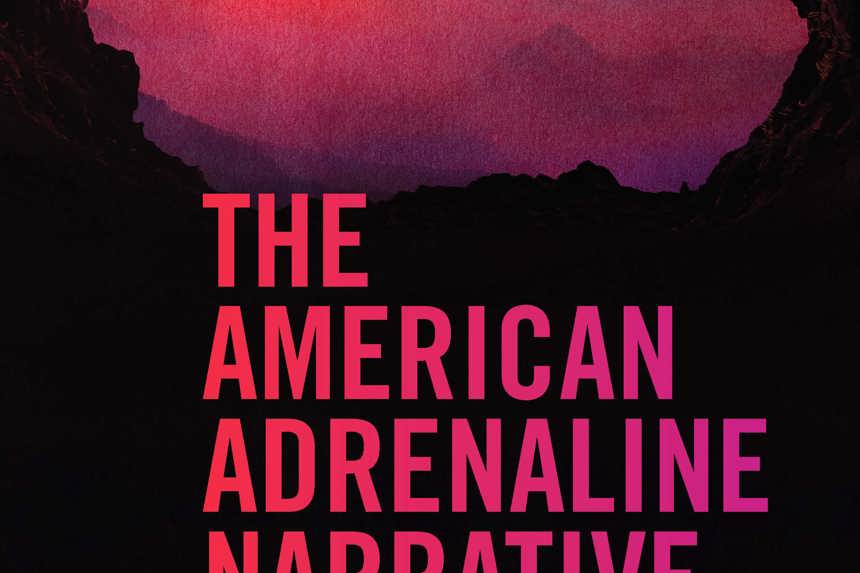
Where did this narrative emerge from?
The contemporary adrenaline narrative has roots in ancient Western and non-Western myths that chronicle heroic and tragic feats, including Native American and other Indigenous storytelling and practices that involve extreme physical challenge in nature.
In terms of the narrative’s American origins, we can see early versions and aspects of the genre’s characteristics in travel narratives as well as colonial and nineteenth-century (auto)biographies, letters, and diaries that focus on exploration and discovery in the “New World.” Such texts help establish America as a site for adventurous self-fashioning. This early American literature helped solidify core American myths related to individualism and exceptionalism, key ideals that continue to play a role in contemporary American adrenaline narratives.
Other American narratives from these same time periods complicate, if not outright object to, America’s manifest destiny and its related, dominant conquering desires toward wilderness. These stories also provide important precursors to the contemporary adrenaline narrative. For example, freedom or slave narratives appropriated spine-tingling narrative constructions while forging their own heroic American identities out of adversity as a result of racism and risky environmental challenges.
There are contemporary factors that also contribute to the emergence of the post-1970 American adrenaline narrative. My research starts with the first Earth Day in April 1970 and the simultaneous rise of the contemporary environmental and social justice movements as well as extreme sports. Notably, the adrenaline narrative goes mainstream over the past fifty years in ways it arguably never had before. Sean Ryan points out in Theorizing Outdoor Recreation and Ecology that “since the 1960s” both the environmental movement and outdoor recreation experienced significant growth. And, our fascination with extreme risk in American culture may also be a byproduct of living in a relatively risk-free modern society. Of course, a sense of risk depends on many factors, influenced by nationality, class, gender, race/ethnicity, physical ability, age, and sexual orientation. As a result, the status of white American masculinity provides another suggestive impetus for the development of extreme cultures in the late twentieth century, especially in the United States. Kyle Kusz points out the connection between the rise of extreme sports and what has widely been dubbed a “crisis” in white masculinity: both follow in the wake of second-wave feminism and the racial justice movements of the late 1960s and 1970s in the United States. Contemporary American adrenaline narratives remain a masculine proving ground.
Where did your interest in the American Adrenaline Narrative come from?
I started reading widely in this genre as an escape from my assigned reading while I was a graduate student in Boulder. My dad also prefers nonfiction and so these were books we could both share and enjoy. Later, as I was working on my Ph.D. at Penn State, I took an environmental literature class and thought these books would offer an interesting research topic for the class, as the contemporary texts tend not to be included in the cannon of environmental literature. That paper became my first published academic article. I had already determined my dissertation topic, which became my first book, and so this project has carried across my academic career.
So, that’s the academic answer. My interest in these narratives goes back further—to growing up in rural Wisconsin where I could go cross-country skiing in my backyard, to family camping trips, to a high school environmental ecology course, and to a college course I took that involved backcountry camping in Big Bend National Park—to name a few sources. Sometimes when I give presentations on adrenaline narratives people ask if I participate in any extreme sports. I am not an extreme athlete, but I relate to the connection to nature that the athletes often describe and how their specific sport fosters “deep play.” Plus, I’m curious: if I’m drawn to something, then I want to know more about it and understand its attraction. My leisure interests developed into a research project.
'Kyle Kusz points out the connection between the rise of extreme sports and what has widely been dubbed a “crisis” in white masculinity: both follow in the wake of second-wave feminism and the racial justice movements of the late 1960s and 1970s in the United States. Contemporary American adrenaline narratives remain a masculine proving ground.'
Given American cultural dominance, is this the world’s dominant adventure narrative? And has it overshadowed competing understandings of adventure?
To answer this question, I think it is first helpful to describe a few more details about the adrenaline narrative itself. In my analysis of this American genre, I identify four primary attitudes or desires toward nature: conquering, spiritual, erotic and risky. Increasingly, furthermore, narratives exhibit an emerging fifth desire, restorative. Where conventional, conquering notions of desire seek to control nature, spiritual constructions of desire rely on transcendental religious discourse to express connections with nature and its transformative potential and effects. An erotic desire founds itself in mutual relationships with nature. Risk pervades conquering, spiritual, and erotic representations of nature, emphasising a primal fear or awe of the wild. Risk connects adventure and the environment and is a characteristic found in all adrenaline narratives. Finally, restorative desire builds from characteristics found in both restoration ecology and restorative justice. This redemptive attitude focuses on long-term sustainability.
Conquering and spiritual desires toward nature are arguably the two most dominant understandings of nature in American adrenaline narratives and, along with risk, are the dominant reasons American adventurers engage in their sport/activity. As a result, American—and Western, more broadly—cultural imperialism or dominance plays an important role in shaping what adventure looks like globally. If you are the first person to conquer a peak or your adventure results in a unique, individual spiritual transformation, the globe wants to know about it. At the same time, the intense focus on individual ability, responsibility, and transformation is connected to extreme adventure’s decreasing use as a technique of national soft power. Extreme sports have largely—at least in an American context—shifted from national projects to individual feats. Large and small expeditions today are often multinational. This means, especially when coupled with the climate crisis, adventurers must account for their adventures in new ways, beyond national fame or, as George Mallory stated in 1923, simply “because it’s there.”
How does this narrative influence our response to the climate crisis?
Adrenaline narratives because of their extreme nature offer unique opportunities to analyse our contemporary risk society, the environmental crisis, and our response to it. The bad news is that they largely demonstrate our collective denial and our confidence in the (eventual) management of environmental risk, even when faced with clear consequences and undefined remedies as well as the uneven distribution of risks among participants.
Yet, research also suggests that participation in outdoor adventure triggers important behaviour and attitude changes as they relate to environmental issues and sustainability. Perhaps reading about adventures in nature has similar beneficial effects, too.
The more adrenaline narratives I encountered, the more I became convinced of the following: as long as American adrenaline narratives participate in “adventure porn,” or emphasising a “pure” and unpopulated nature gained via an artificial escape from pollution and the consequences of the climate crisis, its environmental messaging will involve more greenwashing than serve as a tool for significant environmental change. As Jedediah Purdy writes in After Nature, we are going to need to learn to love (and adventure with) nature in different forms and ways.
These insights are especially key now because, with the advent of the Anthropocene and climate crisis, we are all involved in a risky adventure.
'Adrenaline narratives because of their extreme nature offer unique opportunities to analyse our contemporary risk society, the environmental crisis, and our response to it. The bad news is that they largely demonstrate our collective denial and our confidence in the (eventual) management of environmental risk.'
Does this narrative privilege certain types of people or mindset as ‘adventurous’?
White male adventurers dominate the genre, a control that reflects their continued dominance of the outdoor adventure industry more broadly. These racial and gender hierarchies consciously and unconsciously shape who most easily fits the “appropriate” adventurous subject. Others are deemed “out of place.”
Narratives, for example, tend to privilege adventure defined by leaving the domestic sphere: in an American context, this is Huck Finn lighting out for the territory to escape a stifling home life. As I mentioned earlier, it’s a masculine narrative. As Jennifer Jordan points out in Savage Summit, even today mothers who die adventuring are often eulogised very differently than fathers. Where men die doing what they loved, women are irresponsible and selfish or perhaps were “simply unqualified” to begin with. We see this also in how Sherpas are not generally recognised for their risks or contributions: while there are a few exceptions, they are often rendered invisible by the narrative. Organisations like Black Girls Hike, Diversify Outdoors, the Joy Trip Project, and Native Women Running seek to counter this narrative by placing themselves in it. Their presence on social media platforms like Instagram contribute to shifting the visual narrative of who adventures or what an adventurer looks like. They aren’t waiting to be accepted or approved by mainstream media: they are already part of the adventure and telling their stories.
Again, because we see white supremacy in American culture, it is not surprising, as a result, that it also appears in and structures adventure narratives and culture. However, because contemporary cultures of the extreme have also been associated with counterculture, sometimes the expectation is that these social problems don’t exist in the adventure world. However, subscribing to an alternative lifestyle does not automatically exempt one or the counterculture from the work required to address sexism or racism.
Are there other dark sides to this narrative?
In addition to potentially detrimental environmental consequences, the narrative highlights contemporary America’s social problems, such as economic inequality, racism, sexism, ableism, and homophobia. Not surprisingly, adventurers are not simply able to escape these social justice issues by entering the wilderness. The #MeToo, #BlackLivesMatter, and #NoDAPL movements have helped bring to light these dark sides to the American adrenaline narrative. Project562 and Indigenous Women Hike’s work to reclaim Nüümü Poyo (the John Muir Trail) is an excellent example of the on-going work to change/reclaim the American adrenaline narrative.
If you could reframe this adventure narrative, what would you change?
To shift the narrative requires shifting how adventurers engage nature: to shift from objectifying nature, which usually correlates to objectifying all “others.” I see narratives that emphasise erotic and restorative relationships with nature as key: their intersectional understanding connects social and environmental justice. In other words, we need to solve these “wicked problems” together: sexism, homophobia, racism, economic inequality, and the climate crisis.
Americans especially may also need to engage in the extreme act of refusal: to not engage in specific adventures. The pandemic, for instance, has highlighted several examples of the ways uncritical (white) privilege wears the mask of adventure. I’m thinking of the hikers that broke the law and put communities at risk by hiking the AT during the pandemic. I’m thinking of the woman who called the police on birder Chris Cooper, and I’m thinking of the Sierra Club as well as other nonprofits and outdoor/adventure/environmental businesses grappling with their racist and sexist histories. The good news is that there is a lot of energy and exciting work going on right now to address these problems. It’s especially important for white folks like me to reconsider our desiring natures and find ways to be part of the solutions of these intersecting problems.
'White male adventurers dominate the genre, a control that reflects their continued dominance of the outdoor adventure industry more broadly. These racial and gender hierarchies consciously and unconsciously shape who most easily fits the “appropriate” adventurous subject. Others are deemed “out of place.”'
Where can we find more about your work?
You can order my book directly from the publisher. You can also find it on Amazon or ask your local bookstore to order it. When I post articles and other material related to adventure, I use the hashtag #AdrenalineNarrative. Follow me on Twitter and please send me your adrenaline narrative news and recommendations. The pandemic means budgets are tight for many businesses and nonprofits, and so I’m also happy to schedule a virtual talk with your club, organisation, bookstore, business, or school for free.
